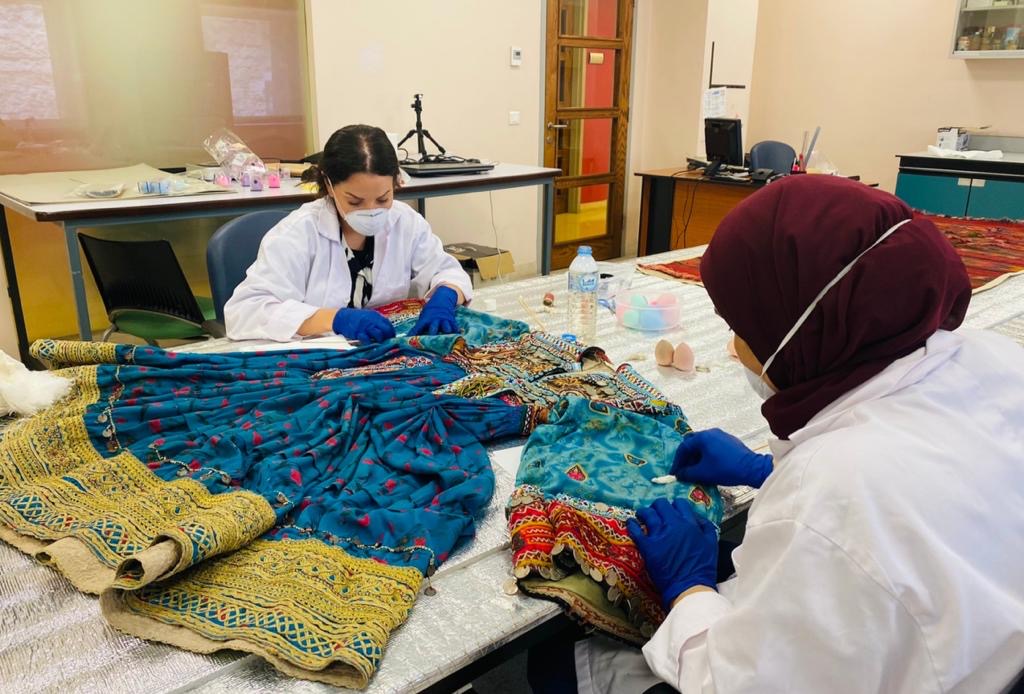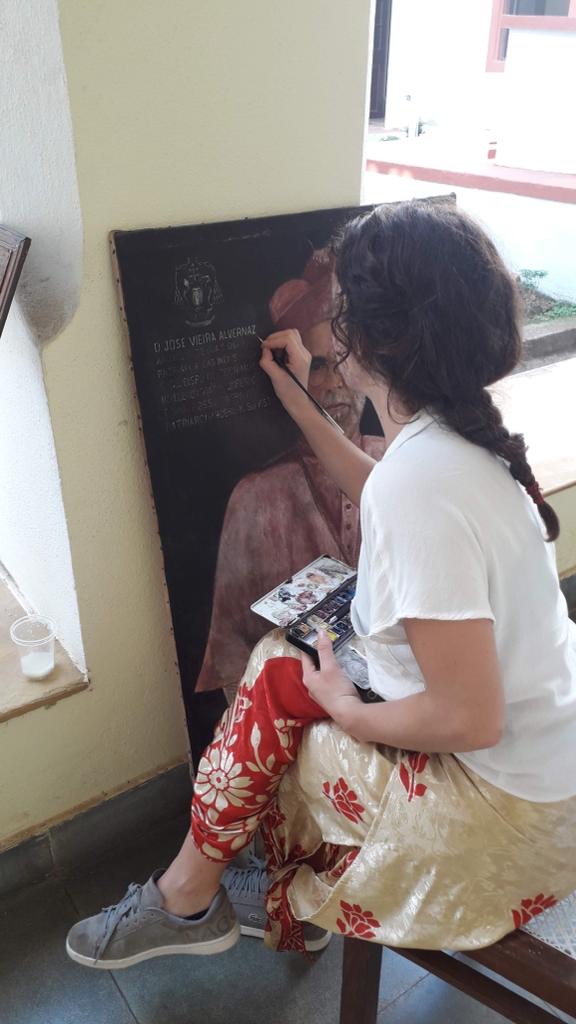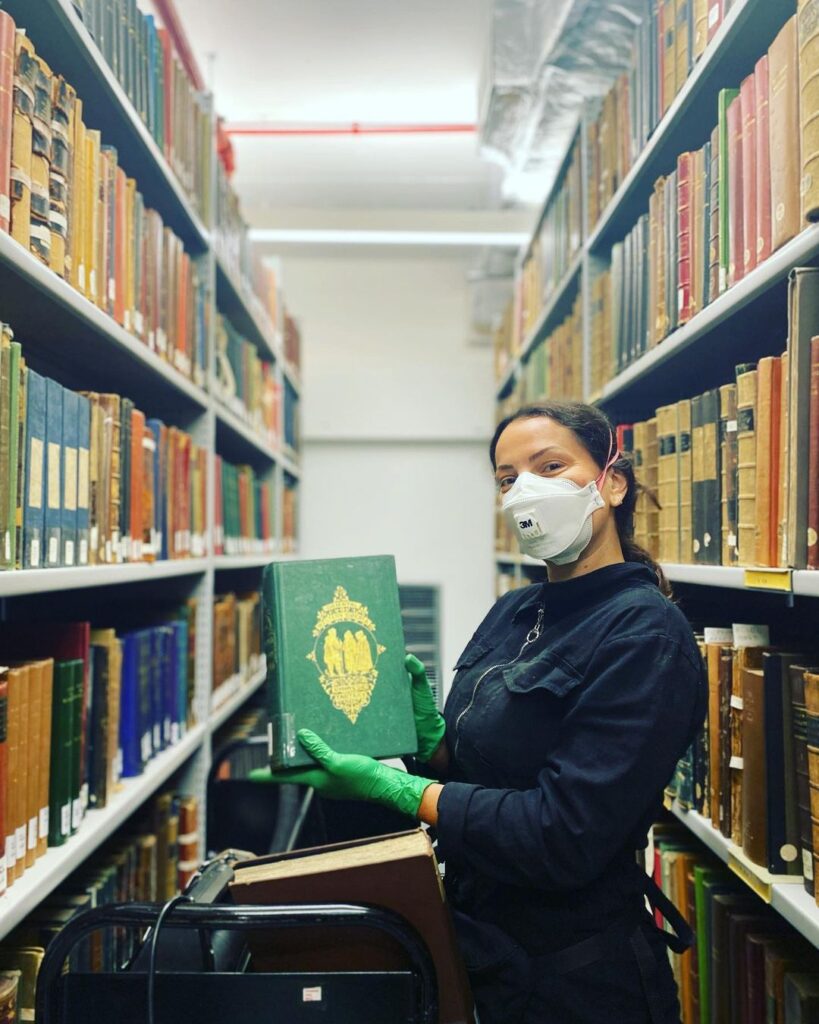In a world where sustainability has become a global priority, cultural heritage restoration emerges as an essential practice to connect our history with a more conscious future. Although restoration is not a new practice, as it has existed for centuries, it has evolved to adapt to modern times. Join us on this fascinating journey where the art of restoration meets the science of preservation, and discover how sustainability is transforming the way we care for our cultural treasures.
From the seven wonders of the world, such as Machu Picchu or the Taj Mahal, to the countless intangible wonders around the world, such as the «xoè» dance of the Thai people in Vietnam or Arabic calligraphy, cultural heritage fascinates us wherever we go.
In fact, one of the reasons why we generally travel to other countries is to discover and get to know their culture. The diversity of traditions, artistic manifestations and ways of life is reflected in the cultural heritage, both tangible and intangible, of a country. If you like numbers and statistics, you will be interested to know, for example, that «more than 28 million trips in 2022 in Spain were mobilised by culture with a total associated expenditure of more than 23.8 billion euros» (according to data from the Department of Culture of the Spanish Government).

If cultural heritage defines us collectively and individually, and is one of the reasons why we travel both nationally and internationally, it seems obvious that it is important to preserve it. The restoration of cultural artefacts, a very important part of conservation, is not only necessary, but also fascinating.
Restoration techniques are very interesting per se. To find out more about this laborious work, I spoke to Giorgia Cipollone, an Italian artist and art conservator based in London.
You will no doubt be enchanted by her life and career path, and you will not be disappointed by what she is currently researching: the restoration of underwater cultural heritage!
INTERVIEW WITH GIORGIA CIPOLLONE
Hi Giorgia! Thanks for taking the time to meeting me. First things first, could you please introduce yourself?
Sure! My name is Giorgia, I am an Italian artist and art conservator. I’ve been living in the UK since 2010/11. Currently, I want to move my career into underwater archaeological conservation. I am also keen of scuba diving, so I want to discover the underwater cultural heritage, which is not very accessible and exposed to the public yet.

Why did you become interested in Conservation?

Everything started when I was little. I was born in middle south Italy, between Rome and Naples, and I grew up in the north of Italy, a countryside near Milan. The place where I grew up was between a castle and a farm (that sounds fancy now but it wasn’t at all), an historical building property of the Visconti family, a wealthy family that had a lot of properties back in the day.
They kept the historical building and they refurnished it as a flat. It was almost like one compound with the church of the village. I think that everything started from the fact that I lived in this historical building, with a very high ceiling and where everything was made from wood and stone.
I remember one of our neighbours did some restoration work and found a fresco, so they opened their house to visitors. This environment gave me the love and passion for conservation, art and history. Also, I was very lucky because I had another two neighbours who were a painter and printer-maker, and an oil painter and conservator. So when I was about five years old, I started to go in their studio and spending all day there, being very nosy and bothering them. I remember the smell of turpentine! It was great. I loved it. Yes, I think everything sparked from there.
And then when you grew up you decided to study it as a professional career, didn’t you?
Oh, this is a long story, but I will try to make it short. Yes, when I grew up I did study Fine Arts, but then a lot of things happened in my life, including a car accident that blocked me for four months because I broke my spine. During this “free time” I started thinking about myself and my life, and I decided to visit London. I always wanted to visit London, I don’t know why, but somehow I’m still here today. Coming from a little village in the Italian countryside, where opportunities were zero and there was not much to do, as soon as I arrived in London I fell in love immediately.

I started then to find my way into society and I started to work straight away. When I was in my 20s, I was more focused on discovering the world, so I traveled a lot in many countries. Then I decided to study again, because I believe that the educational background matters a lot. I was very happy to take this choice even if a lot of people around me had doubts, because I started college when I was 27 years old. It was the best choice of my life!
I did three years of Painting Conservation in London, which opened to me many doors. I’m still today in contact with all the people of this Academy, which are great conservators, and I did my very, very first travel experience as a Conservator. We went to India, to Goa.
Goa is a Portuguese colony, so they have a lot of Christian art. We restored around 20 oil paintings and frames, from the Archbishop Palace. It was an incredible experience and I confirmed that this was what I wanted to do all my life. I finished my course, and I was working already. I had my own painting conservation studio and networking, but I wanted to do more.
Consequently, I started to work at the school where I studied as a teaching assistant, and I started thinking I wanted to experience with new objects. I always have had this attraction for archaeology, history and anthropology, so I moved to the University of Lincoln to specialise in Underwater Archaeological Conservation.
Talking about Archaeological Conservation, you also worked in Egypt, right?

Yes, my second experience abroad was with the Archaeological Egyptian Museum in Cairo. I was there for three months, not only for work but also to travel around and I explored the country. All the other people were students from Cairo, so I was the only one from a foreign country who didn’t speak Arabic.
It was a great experience. I tried to integrate with the local people and I learned a bit of the language. When you visit a foreign country you have to show respect to their culture, religion and the way of living.

It was also really interesting in terms of archaeological environment because Egypt is one of the main countries regarding this kind of heritage. I really felt like Indiana Jones!
Being in the laboratory of conservation working with papyrus, really old objects that made the history of the human civilization… I felt blessed every day to be there, working with these artefacts and sharing knowledge with other people.
As you are based in London, are you involved in any projects there?

Yes, I’ve done a very interesting project with a central library this summer! A team of conservators and me worked with this very big and old archive of books from everywhere in the world. Books are something really important, as they are part of the history and the heritage of the humanity, and it’s so exciting to see how each country approaches its history through their books.
From all of them, the most beautiful books I went across were the ones talking about mathematics and astrology from Asian countries. The way how they made these books is absolutely beautiful, I didn’t even know this kind of shape existed!
I also loved a book about the Buddhist religion and culture which was all handmade in bamboo, with a very well carved and shaped cover, all red and gold painted, and with long sheets of paper inside. It was so beautiful…
That’s so interesting! I really love books, so when I travel I always try to visit libraries and learn more about the local “book” culture. For example, on this same blog I talk about washi paper in Japan and papyrus in Egypt. I think your experience restoring papyrus and working with ancient books is so inspiring.
*washi paper article and papyrus article
Thank you! Yes, I’ve seen on your website that you are also very passionate about art and you also like these discoveries and techniques from other countries. So, we are definitely very different persons but very connected by our passion and interests!

Earlier you said that you now want to specialise in Underwater Cultural Heritage, how are you approaching this?
Yes! So, this is a new field for me. I’m into scuba diving, even though I’m not a pro yet, and I am doing a thesis with the University of Lincoln on underwater cultural heritage which is due in May 2024. I am studying how to protect, restore and conserve underwater artefacts with a focus on stone material. I’m exploring restoration methods they just discovered recently, actually the underwater conservation is quite recent. I also would like to research how climate change will affect the underwater heritage and environment, and how this new technique will be resistant or applicable with a changing environment.
I’m a very practical person, so I want to do research but also want to do the underwater conservation treatment by myself. This year, as I am going to Italy for Christmas, I’ve contacted the Director of the Archaeological Underwater Park called BAIA (Naples), and I will do some diving and explore the park if the weather conditions are good enough (fingers crossed!), and also get to know more about their restauration project.
I know that you are also an artist! Which kind of work do you do?

This story also starts back into my childhood. When I was little, I start being a student of one of these artist neighbours I told you about, who teached me a lot about portrait. This is why I always loved portraits and I’ve always been fascinated about human faces, mostly from women. I don’t know why but I always draw women’s faces. Then I had a block when I was on my 20s and I stopped making art for a while.
After a lot of travelling and experience, I started to do art again, but my art is a bit particular. I always think that or you love it or you hate it. My painting are mostly woman portraits, probably connected to the research of my own person. I think in all the women that I draw or paint, I always try to represent something about myself (even if I never paint myself).

Later on, I also developed other skills in art like body painting. Unfortunately, I don’t have time to make this my main career, but if I’d have seven life like cats, I would definitely do it! Sometimes I work as a body painter in few venues, like the Spanish festival ELROW. They choose a different topic every year, and it’s amazing – it’s explosion of colour and performance.
Finally, I also work as an art coach and teacher for beginners. These are painting events by the company Primer Pass. I am really happy with this experience of “giving to people”, so I will keep doing the art classes when I can and keeping my artistic side alive.
Dedicating yourself to the restoration of artworks, how did your knowledge and experience in conservation affected your artistic creation?
I think there’s some connection between them for sure. It’s been always said that conservators are not artists. This is because, obviously, when you are doing a conservation work you don’t have to think with the mindset of an artist, otherwise you are going to modify the painting. This wouldn’t be conservation and restoration; you would create your own artwork, and this is wrong. Consequently, these are very separate professions: conservator and artist. But at the same time, the two are very connected.
Moreover, humans have always made art. Even in a building or a monument, everything has always expressed their own feelings and needs. I’ve never met any conservator that doesn’t have an artist’s soul. I think conservators are always great people because they want to preserve, they are not doing it for business. And that’s the case also for artists, I think. When you are an artist, you don’t really do it for profit of business, you do it for passion, you are moved from love and because you want to discover something.
Conclusions on cultural heritage restoration
Thanks to this conversation with Giorgia, we can see that each cultural manifestation requires a different approach. Giorgia has had the opportunity to work with textiles, papyrus, ancient books, archaeological objects and artefacts… and now she is approaching underwater heritage. Moreover, her artistic production is very diverse, ranging from traditional techniques such as oil painting to more modern techniques such as body painting. Giorgia is a multifaceted person and it has been a pleasure to learn a little more about her career!
I would like to close this article with UNESCO’s definition of the conservation of cultural heritage, which perfectly attests to the importance of preserving our heritage from generation to generation:
«The conservation of cultural heritage refers to the measures taken to extend the life of cultural heritage while strengthening transmission of its significant heritage messages and values. In the domain of cultural property, the aim of conservation is to maintain the physical and cultural characteristics of the object to ensure that its value is not diminished and that it will outlive our limited time span».
UNESCO
Teaser of the interview below:
If you want to know more about cultural heritage, check out episode 2 on archaeology and episode 3 on conservation!



Pingback:EPISODE #3 ARCHAEOLOGICAL CONSERVATION - Alba Cid